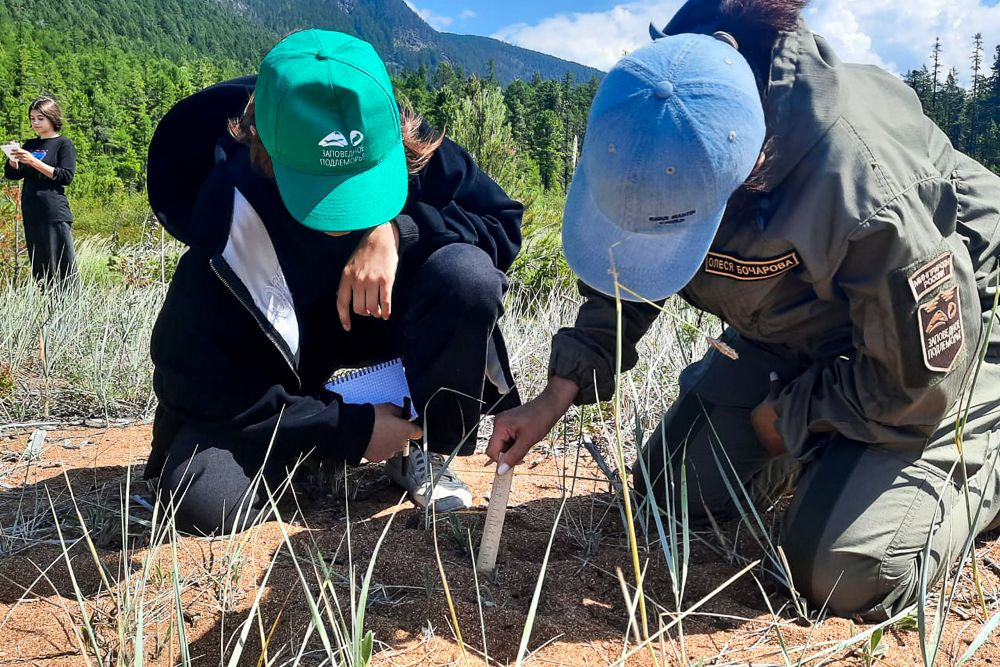
Scientific research continues in specially protected natural areas of federal significance. But in some nature reserves, wildlife sanctuaries and national parks, interim results are already being drawn up.
In the Bolshekhehtsirsky Nature Reserve in the Khabarovsk Territory, gastrodia elata has made its reappearance. This relict endemic of the Khabarovsk Territory, the Amur Region and the Primorsky Territory is extremely rare - it blooms once in its life at 8-9 years. Before the flowering period begins, the entire life cycle of the plant takes place underground. Several years ago, during a snowless winter in the Khabarovsk Territory, the plant suffered from frost and disappeared for a couple of years.
“When I saw a small clump of gastrodia, I couldn’t bear the suspense and dug up the soil at the root to see if there were buds for next year. It turned out that there were. This means that the endemic species will not be lost next year,” said Yuri Kya, chief engineer for forest protection and forestry activities of the Bolshekhehtsirsky Nature Reserve.
This summer, on the territory of the Frolikha Nature Reserve in the Republic of Buryatia in Ayaya Bay, we continued the monitoring of rare plant species, which has been carried out in protected areas for several years. The work was carried out under the “Save the Flowers of Baikal” program by schoolchildren from Severobaikalsk under the guidance of employees of the protected area. During the census of the almost-woolly cranium, which took place at three sites, it was concluded that the population was in a favorable state. The children counted all the plants they encountered, noted their phenological state, and collected material on morphology. Compared to last year, a lot of young plants were noted.
In the Kenozersky National Park in the Arkhangelsk Region, a new species of butterfly for protected areas has been registered - the rosy footman (mitochrista miniata). The insect became the 63rd species of butterfly registered in the Kenozersky National Park. The discovery was made by a resident of the village of Vershinino, Anna Yuryeva. Last year, she recorded another butterfly in the national park - the herald (scoliopteryx libatrix).
Field work on environmental monitoring of the White Sea Baikal seal took place in the Onezhskoye Pomorie National Park in the Arkhangelsk Region. The research was carried out on Konyukhovaya Bay of the Onega Peninsula by employees of the Marine Mammal Laboratory of the Murmansk Marine Biological Institute of the Russian Academy of Sciences with the support of protected areas. Scientists have developed a technique for catching seals using stationary floating traps, which are absolutely safe for mammals. Special satellite telemetry sensors were installed on eight individuals, thanks to which new data can be obtained on the distribution and seasonal migrations of seals in the White Sea throughout the year. The information obtained will also help to form a clearer idea of the ecology of animals, to understand how young seals behave in the summer in Onega Bay, in which directions they move in search of food.
Scientists also observed the dynamics of the number of seals in the summer haulouts in Konyukhovaya Bay and obtained new biological data on the size, body weight, sex, and age of the seals. Based on the research results, it was noted that the activities of the Onega Pomorie National Park made it possible to preserve a unique habitat not only for the Baikal seal, but also for the bearded seal, which is regularly found on rocky shallows.
In the Central Forest Reserve in the Tver region, work began in the summer on an inventory of European badger settlements. This is the first stage of research into the behavioral ecology of this species, which will be carried out in protected areas in the coming years together with the A.N. Severtsov Institute of Ecology and Evolution RAS. Within the boundaries of its range, the European badger demonstrates a wide variety of family relationships - from a solitary lifestyle to the formation of families of up to 30 individuals. Therefore, the species is of great interest when studying the formation and development of a group lifestyle in predators. At the first stage of work, a detailed description of all known badger habitats is carried out. Camera traps are installed near the entrances to collect information on the daily and seasonal activity of animals. Moreover, both the badger itself and its “guests” - other species of predators and ungulates. This information is necessary to determine the composition of family groups and the number of badger cubs in litters, which will make it possible to calculate the number of badgers in the reserve.
Related materials:
Green Russia: "Count badgers and preserve endemic animals: The summer field season
continues in nature reserves and national parks"
Zoopicture: "Tver badgers will be counted"
Tverskaya Vedomosti: “Badgers have begun to be counted in the Tver region”
Bezformata: “In the reserve of the Tver region, they continue to count badgers and badger
cubs”
Izvestiya: “Badgers will be counted in the Tver region”
TIA News: “The counting of badgers and badger cubs continues in the reserve of the Tver
region”
